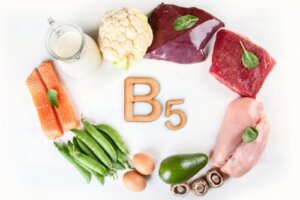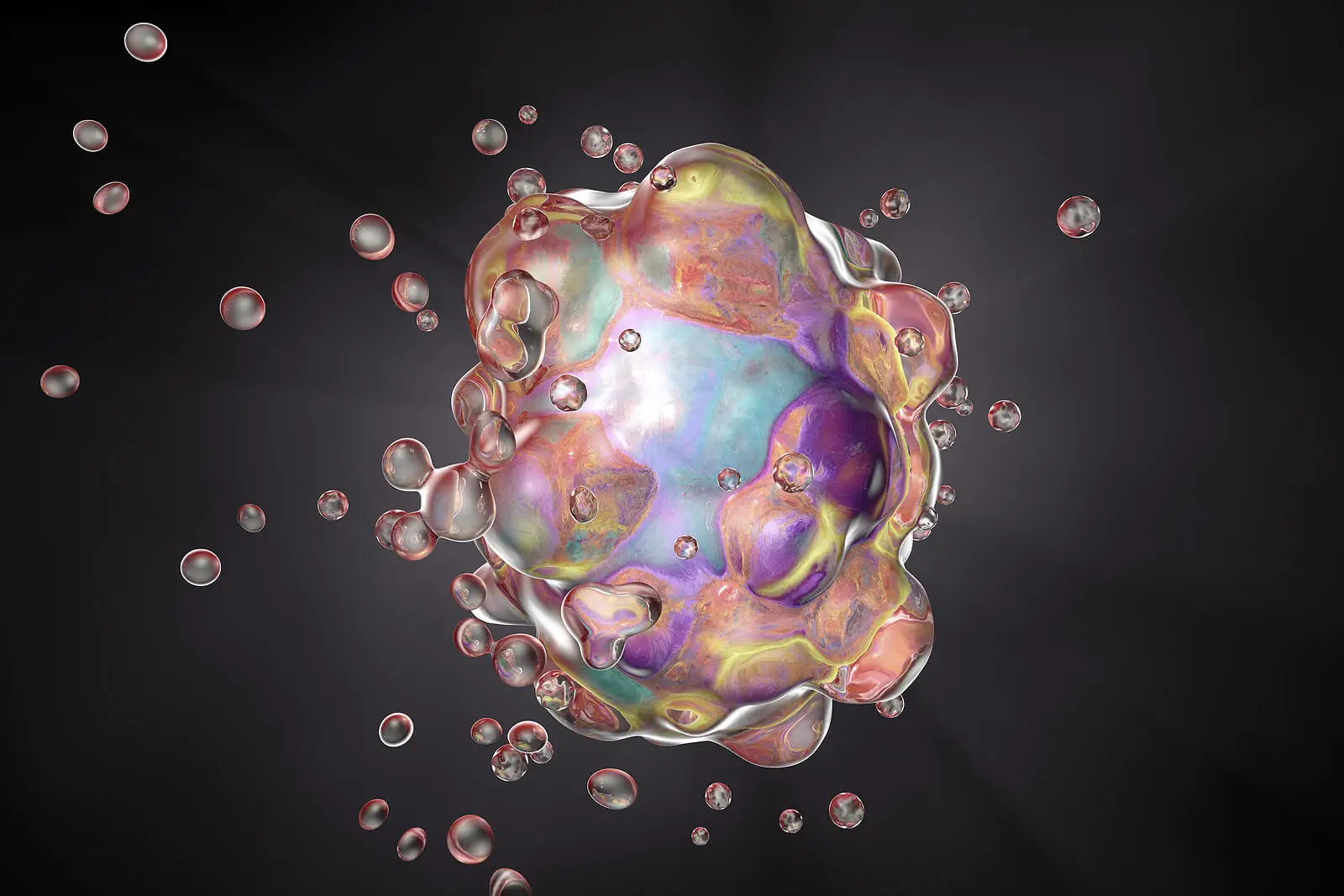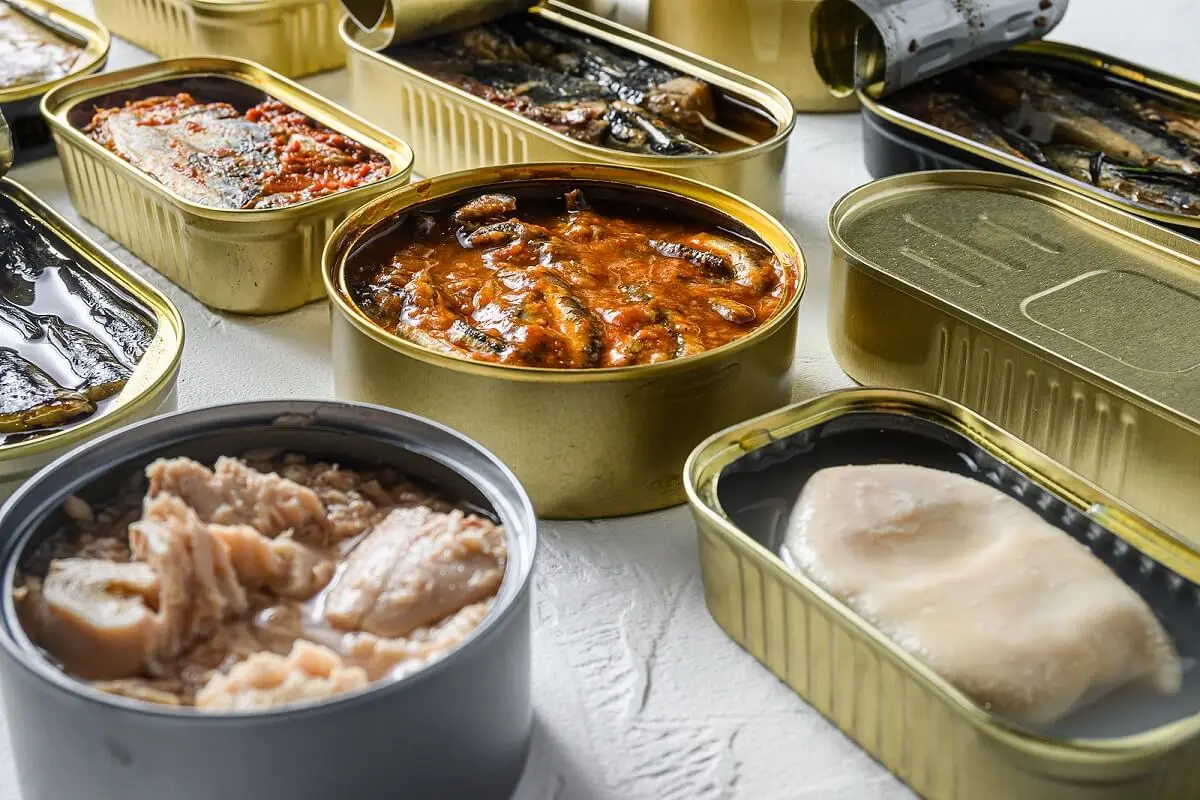Pantothenic Acid or Vitamin B5: Functions and Foods Containing It


Written and verified by the nutritionist Maria Patricia Pinero Corredor
From a physiological point of view, the most recognized characteristic of pantothenic acid or vitamin B5 is its industrious role as an energy producer. This vitamin is a structural part of an essential compound in metabolism, such as coenzyme A. In other words, it helps convert food into energy for the body.
As it’s an essential micronutrient, it must be part of your food intake.
Many foods contain it and it’s widely distributed in foods of animal and vegetable origin. That’s why its deficiency is uncommon and doesn’t usually cause severe problems. However, if you stop consuming pantothenic acid for a long time you could affect the metabolic balance of the body.
To learn more about pantothenic acid, its importance and the foods that contain it, keep reading.
Another great article: Complex B Vitamins: Characteristics, Benefits, and Functions
What is pantothenic acid?
Pantothenic acid is also known as vitamin B5 and was identified more than 60 years ago. It belongs to the water-soluble group, that is, those that dissolve in water and don’t need a fatty medium to be absorbed. It’s essential because cells can’t produce it.
Its name derives from the Greek panthos, which means “everywhere”. It’s essential at any stage of life, as it’s an essential part of the transportation of energy-yielding compounds.
Vitamin B5 functions
The basic functions of pantothenic acid are varied. The most important are the following.
It enables the production of energy for the body
Pantothenic acid is a structural part of coenzyme A. It’s a transporter of energy-producing chemical groups involved in the metabolic reactions of carbohydrates, fats and proteins.

It synthesizes various compounds of lipid origin
The most common form of vitamin B5 is found in CoA. When it’s broken down in the intestine it releases the acid. Coenzyme A facilitates the synthesis of hormones, cholesterol, and neurotransmitters.
It’s involved in the production of melatonin and hemoglobin
Coenzyme A derivatives are used to synthesize melatonin, a hormone that regulates rhythmic processes such as sleep induction. It also reduces free radicals that oxidize cells and prevent neurodegenerative diseases.
The heme group of hemoglobin is also synthesized by coenzyme A derivatives. In addition, the hepatic metabolism of some drugs and toxins require the coenzyme.
Read more here: 4 Melatonin-Rich Foods
Possible health benefits
Pantothenic acid may help solve some health problems. For example, taking B5 supplements may speed up wound healing. In people with high blood fat levels, it helps to reduce cholesterol and triglycerides.
In addition, even though these are only preliminary results, vitamin B5 supplements are so far effective in reducing the symptoms of rheumatoid arthritis.
Consumption recommendations
The National Institute of Health recommends that the volume to be ingested depends on age and sex. The recommended daily amounts are as follows:
- Children from 1 to 3 years old: 2 mg.
- Children 4 to 8 years old: 3 mg.
- Children 9 to 13 years old: 4 mg.
- Adolescents and adults: 5 mg.
- Pregnant women: 6 mg.
- Breastfeeding women: 7 mg.
Foods containing it
As mentioned, vitamin B5 is found in a wide variety of foods. However, there are some that contain more of it than others.
Because it’s susceptible to heat and oxidation, significant amounts of pantothenic acid are lost during food processing. This occurs in canned vegetables and meats, as well as in grain refining.
Canned meats and fish lose up to 35% in processing. Grains, after eliminating the bran, lose up to 47%.
Other important losses occur during canning, up to 78%. Freezing vegetables reduces vitamin B5 by 57%.

The main sources are the following:
- Beef, chicken, seafood, fish, and fish roe, such as caviar. Viscera, such as chicken and calf liver, have good proportions of this vitamin.
- Whole grains and wheat bran. Cereals such as oats, amaranth, rye, and buckwheat, among others.
- Egg yolks.
- Nuts and seeds. Especially peanuts and sunflower seeds.
- Dairy products, such as cheeses. Vitamin B5 stands out, especially in matured cheeses, such as Roquefort and Camembert. As they’re fermented by acid lactic acid bacteria, they synthesize this vitamin as part of their process.
- Mushrooms.
- Legumes, such as beans and chickpeas.
Pantothenic acid supplements
Vitamin B5 is sold as a dietary supplement, alone or combined with other B vitamins. It’s also marketed as a multivitamin and multimineral. It’s found in the form of pantethine or calcium pantothenate.
Fortunately, eating a healthy diet will ensure its supply. Supplements are only recommended when medically indicated.
All cited sources were thoroughly reviewed by our team to ensure their quality, reliability, currency, and validity. The bibliography of this article was considered reliable and of academic or scientific accuracy.
- Gerald F. Combs, James P. McClung, Chapter 16 – Pantothenic Acid, The Vitamins (Fifth Edition), Academic Press, 2017, Pages 387-398, ISBN 9780128029657, https://doi.org/10.1016/B978-0-12-802965-7.00016-2.
- Robert B. Rucker, James Morris, Andrea J. Fascetti, Chapter 23 – Vitamins, Clinical Biochemistry of Domestic Animals (Sixth Edition), Academic Press, 2008, Pages 695-730, ISBN 9780123704917,https://doi.org/10.1016/B978-0-12-370491-7.00023-4.
- BREIXO VENTOSO GARCÍA. NUTRICIÓN Y CÁNCER: EMPLEO DE LA MELATONINA EN TERAPIA NUTRICIONAL ANTICANCERÍGENA. ÁREA DE INNOVACIÓN Y DESARROLLO, S.L. Primera edición, 2017, DOI: http://dx.doi.org/10.17993/CcyLl.2017.05
- Bauerly K, Rucker RB. Pantothenic acid. In: Zempleni J, Rucker RB, McCormick DB, Suttie JW, eds. Handbook of vitamins. 4th ed. Boca Raton: CRC Press; 2007:289-314. https://www.academia.edu/25369962/Handbook_of_Vitamins_4th_Edition
- Nutri-Facts. Vitamina B5. Disponible en: https://www.nutri-facts.org/content/dam/nutrifacts/pdf/nutrients-pdf-es/Vitamina_B5.pdf
- Joshua W. Miller, Lisa M. Rogers, and Robert B. Rucker. Pantothenic Acid. In book: Present Knowledge in Nutrition, 2012, (pp.375-390). DOI:10.1002/9781119946045.ch24.
- National Institute of Health. Ácido pantoténico. Disponible en: https://ods.od.nih.gov/factsheets/PantothenicAcid-DatosEnEspanol/
This text is provided for informational purposes only and does not replace consultation with a professional. If in doubt, consult your specialist.








